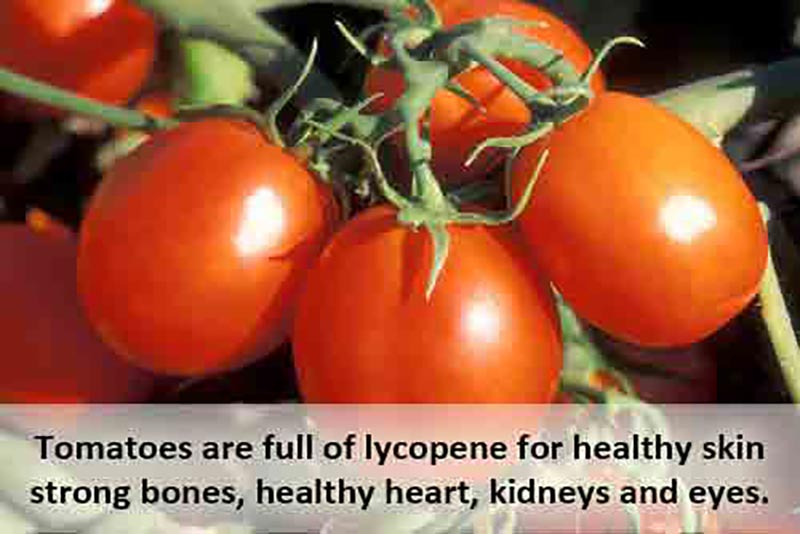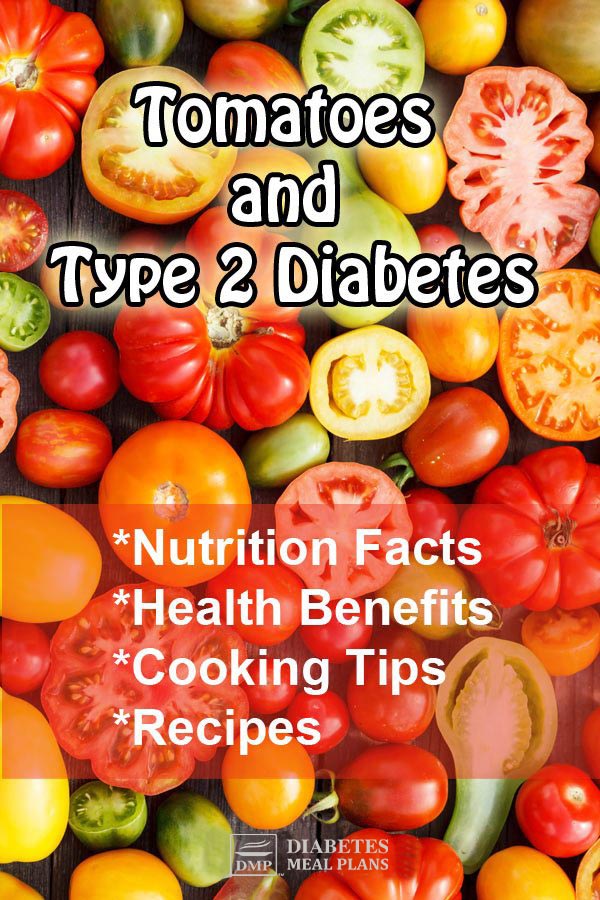There are hundreds of varieties of tomatoes with slight differences in color, texture and flavor; however, there is very little difference in the plethora of nutritional benefits they offer.

One question that often comes up is: Is tomato a vegetable or a fruit?
The answer is “yes” to both!
Surprisingly, the two words – vegetable and fruit – are not mutually exclusive terms!
By definition a fruit is a seed bearing structure formed from the ovary of the plant after it flowers. It is a botanical distinction from other plants such as tubers – the stem of a plant that grows underground providing a storage of nutrients for growth. Tomatoes have seeds and fit the botanical definition of a fruit.
But then…what is a vegetable?
Well, it has nothing to do with botany, but is rather a culinary distinction, generally describing a savory edible part of the plant. It’s defined more loosely and culturally. So most people wouldn’t consider grapes vegetables since they are sweet, not savory. While tomatoes can be a bit sweet at times, they are generally used in savory dishes and so they are often considered a vegetable.
Fun fact of the day: Tomato is considered both a vegetable and a fruit!
Tomato Nutrition Facts
- Tomatoes provide an excellent source of vitamin C (33% of recommended daily value) and are a good source of beta carotene (8%)
- Tomatoes are very low on the glycemic index at 15
- Tomatoes are a low carb vegetable at less than 5 grams per serving
- Tomatoes are low in calories at only 32 per 1 cup serving
- Tomatoes supply many other vitamins (especially vitamin E) and minerals (especially manganese) as well as antioxidants (such as lycopene)

Tomato (1 medium, 123 g)
Nutrition Facts
Calories: 22 | Total Fat: 0.25 g | Sat Fat: 0.03 g | Poly: 0.10 g | Mono: 0.03 g | Total Carbs: 4.7 g | Fiber: 1.5 g | Net Carbs: 3.2 g | Protein: 1.0 g
Minerals
Calcium: 12 mg | Iron: 0.3 mg | Magnesium: 14 mg | Phosphorus: 30 mg | Potassium: 292 mg | Zinc: 0.2 mg
Vitamins
Vitamin C: 16.9 mg | Thiamin: 0.04 mg | Riboflavin: 0.02 mg | Niacin: 0.7 mg | Vit B6: 0.09 mg | Folate: 18 ug | Vit B12: 0 mg | Vit A: 1025 IU | Vit E: 0.66 mg | Vit D: 0 IU | Vit K: 9.7 ug
Tomato Benefits for Diabetes
- Vitamin C – strengthens the immune system and improves bone health, blood vessels and skin tissue
- Lycopene – a carotenoid for eye and bone health and cancer prevention
- Lutein – a carotenoid known for its promotion of eye health, brain health, and memory
- Beta-carotene – supports healthy vision and immunity
- Flavonoids – (such as esculoside A; chalconaringenin; 9-oxo-octadecadienoic acid) have anti-inflammatory and antioxidant effects
- Vitamin E – has cardioprotective antioxidant effects and helps with skin, hair, and hormonal regulation
Research on Tomato Specific to T2 Diabetes
While it hasn’t been shown to directly lower a1c, intake of tomatoes has been shown to improve associated outcomes through reducing associated complications of type 2 diabetes.
Several studies have shown heart health benefits through decreasing LDL (‘bad’) cholesterol, and triglycerides as well as preventing platelet aggregation, which leads to clumping in the blood, increasing risk of heart attack.
A study measuring the addition of 200 grams tomato daily in diabetics showed reduction in blood pressure and improvement in lipid (cholesterol) profile with a reduction in cardiovascular risk. Adding olive oil has been shown to enhance those benefits.
Tomatoes have also been shown to have an anti-inflammatory effect, even reducing pain in those with diabetes and obesity. Finally there is evidence that tomato consumption has a positive (lowering) effect on both weight and blood glucose.
And so it seems…
Tomatoes are great for heart health, inflammation and blood glucose.
Tomato Juice for Diabetes
1 cup tomato juice, canned without salt is 8.5 g total carbs, 1 g fiber, 7.5 g net carbs. Compared to something like apple juice, at approximately 28 g per cup, tomato juice is obviously a better option.
Interestingly, there have been a few studies done on tomato juice in relation to diabetes and obesity, though at this stage the results are slightly conflicting.
For example, one study has shown that it reduces oxidative stress, while another study did not reach the same conclusion.
In one study, drinking 10 oz (300ml) day tomato juice for 20 days reduced a major inflammatory marker called IL-6 in obese participants. Since inflammation and heart disease go hand in hand, the researchers propose that reducing inflammation could reduce risk of heart conditions in diabetes.
Still, one study is not really enough to draw any real conclusions. So your best bet is to test your levels and see how tomato juice affects you.
Points for Consideration
While, tomatoes are generally safe, they are among the nightshade vegetables – along with peppers, potatoes and eggplant – which some people find troublesome, especially those with autoimmune conditions such as arthritis.
Additionally, tomatoes are high in acid which can exacerbate symptoms in those who have acid reflux and may induce mouth sores if eaten in excess.
Note that canned tomatoes are often very high in sodium, so be sure to check the label if not eaten fresh. They do sell low sodium tomatoes or no salt-added versions so make sure you choose those.
Finally, non-organic tomatoes have been sprayed with pesticides, so be sure to wash tomatoes before using them.
Tomatoes and Diabetes Conclusion
On the whole, tomatoes are a great low carb vegetable that can add a lot of flavor and texture to dishes.
They are a very nutrient dense food providing many micronutrients – vitamins and minerals – for a minimal amount of calories. They can be added to a variety of savory dishes or simply eaten fresh as a simple snack.

Tomatoes in the Kitchen
Selection
Tomatoes are very perishable so careful selection is key. Choose tomatoes with firm smooth skin and vibrant color. In addition to the most common red tomato, there are also varieties of yellow, orange, green and even purple tomatoes!
Avoid soft spots, blemishes or bruises or be sure to cut these off before adding to recipes.
Storage
Tomatoes should be stored at room temperature out of the sunlight. Again, they are very perishable and will only last a week or sometimes to weeks if kept in the fridge when ripened. Refrigerating will slow the ripening process while placing in a brown paper bag will speed it up.
Uses
Raw tomatoes can be added to salads or eaten as a snack. They can also be diced and scrambled into eggs, made into a salsa, or added to stir-fries or casseroles.
Canned tomatoes or tomato paste are very versatile and can be used in casserole-type dishes (eg: a tomato-filled veggie bake), or in spaghetti sauces for pasta substitutes or zucchini noodles. Just remember to choose low salt or no salt when buying canned goods.
Sundried tomatoes can be used in salads, or stir fries or to top cucumber crackers.
Cooking
- Tomatoes can be tossed into dishes fresh, then cooked along with everything else – for example, a pot roast, stir fry, or scrambled eggs – as they do not require long cooking times.
- Tomatoes can also be roasted: simply toss with a bit of olive oil, salt and pepper (garlic if you like!) and bake at 450F/ 230C for about 30 minutes until they begin to caramelize. Roasting will provide a very rich, deep flavor.
Cutting Techniques
Tomatoes can be a bit tricky to cut since they are super juicy and can squirt all over the place.
The trick is to use a serrated knife or paring knife – which has a serated-like edge. You can buy serrated knifes that are specifically for tomato cutting. Though any serrated knife you have handy should do the job. The serrated edge makes cutting tomatoes a breeze, while a flat edge can slip off the tomato.




With your serrated knife, use a light sawing motion until you get through the skin, then going back and forth slowly. If you just come straight down on the tomato, it will smoosh and you’ll have a big tomato-y mess everywhere. Gentleness is key as they are a delicate fruit.
Here is a short video that shows slicing tomatoes, and demonstrates the difference with a flat and serrated knife.
Here’s a video that shows how to dice tomatoes two different ways. Notice how the chefs always keep their fingers bent and flat against the knife edge so they don’t slice their fingers!

Cathy
Great Information. Raised on tomatoes. Awesome sandwiches. Have type 2. Thank you for knowledge.
John Medel
I like drinking coffee in the morning, but i love adding flavored creamers. What can I use now that I’ve been diagnosed with type 2 diabetes?
Jedha
Try milk/cream and stevia for sweetening. Here’s some info on best sugar substitutes John.